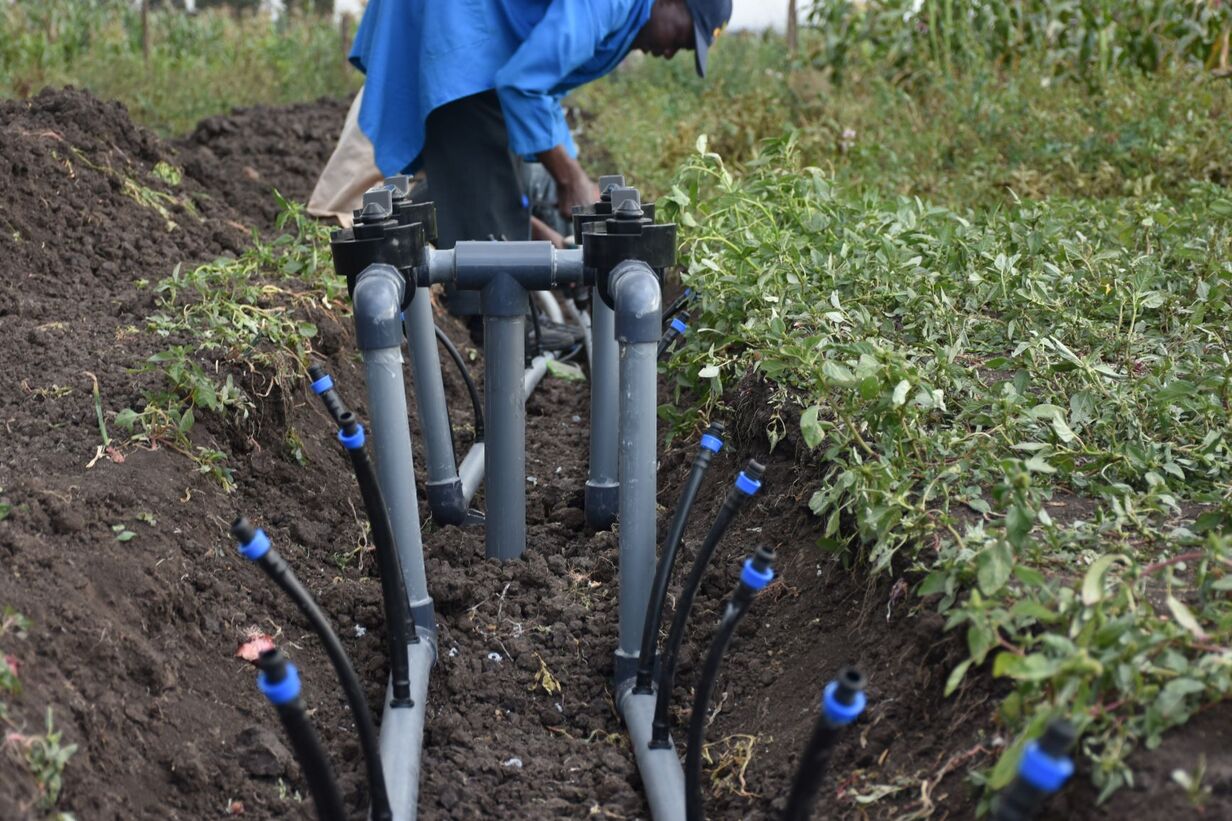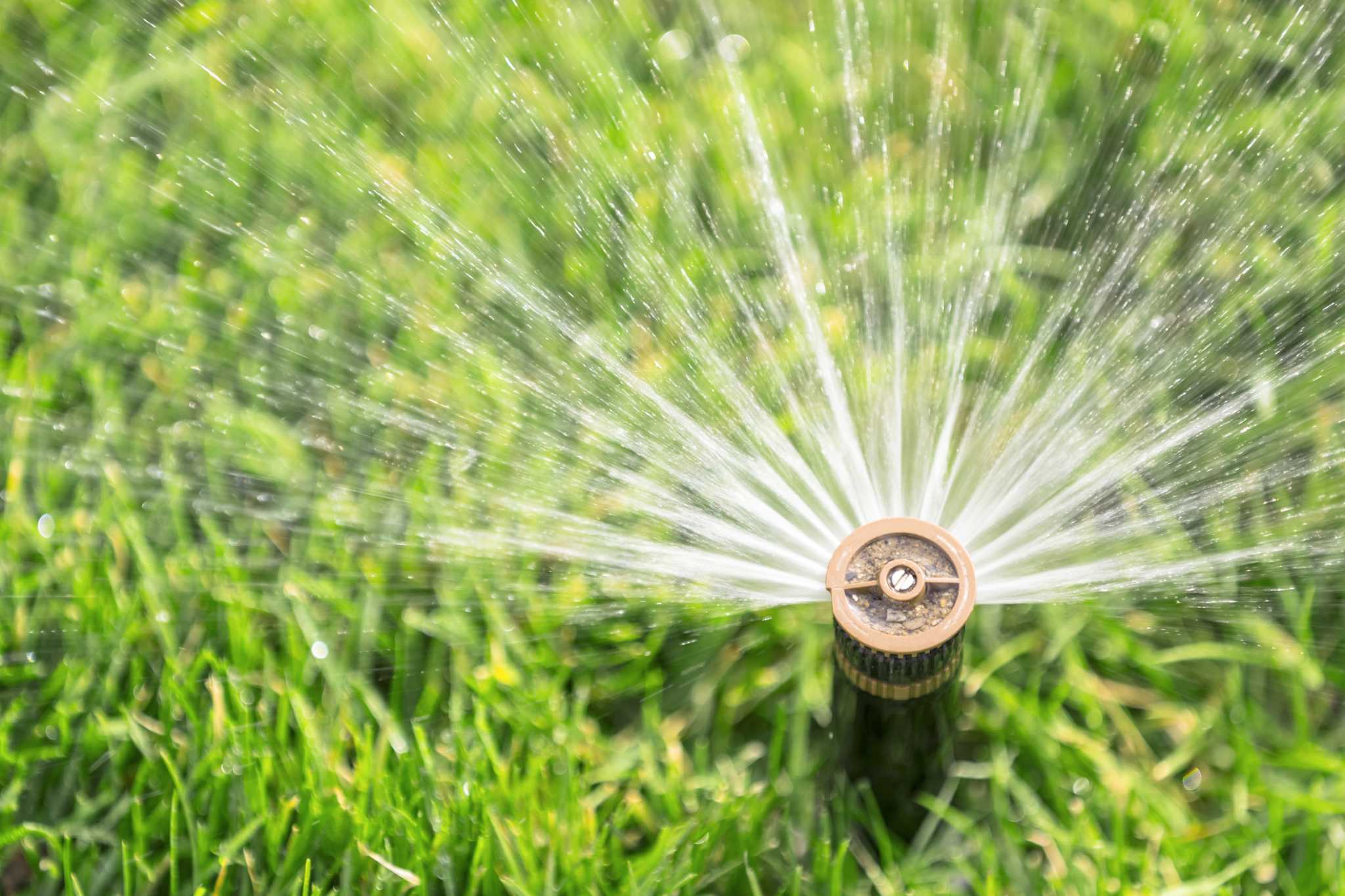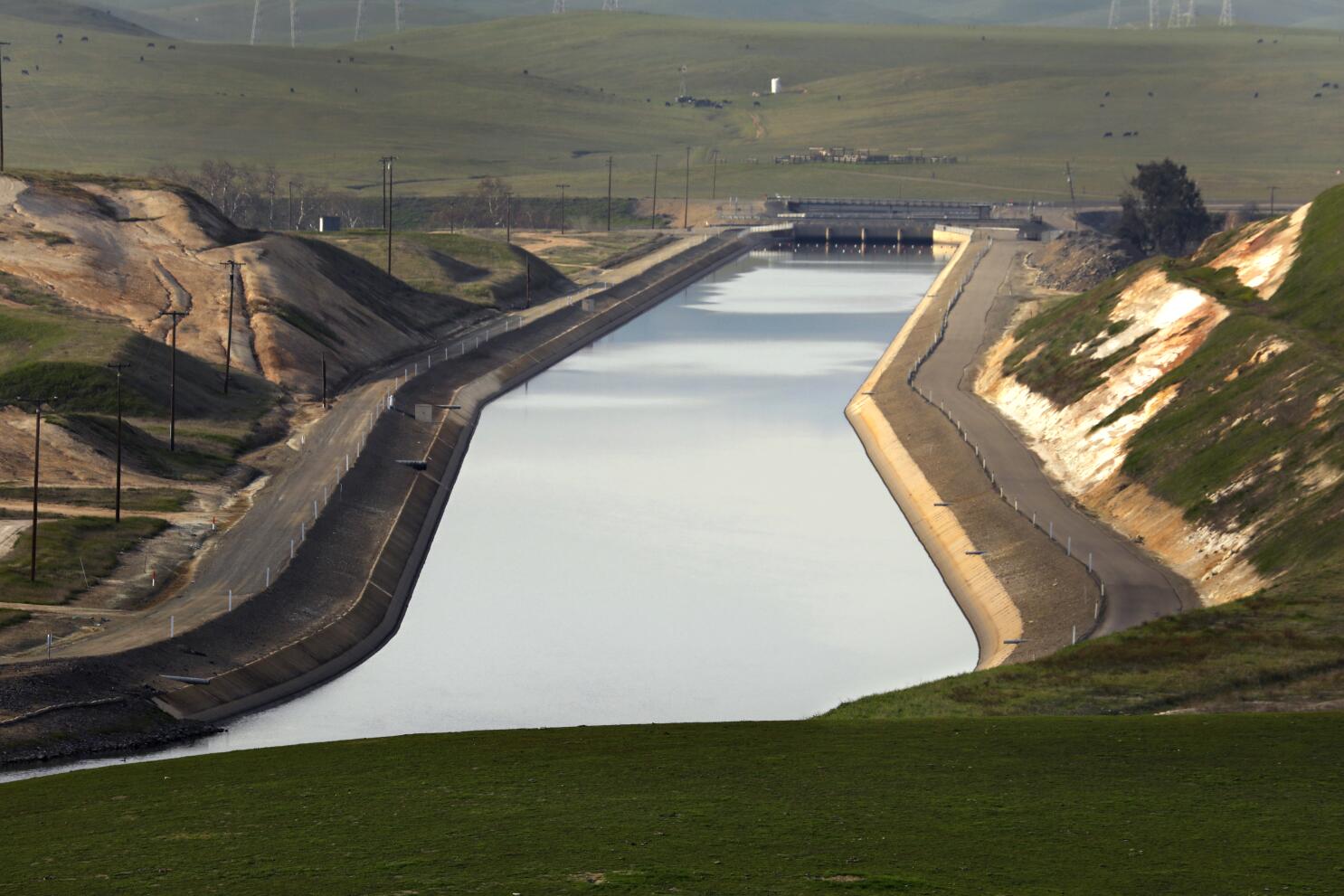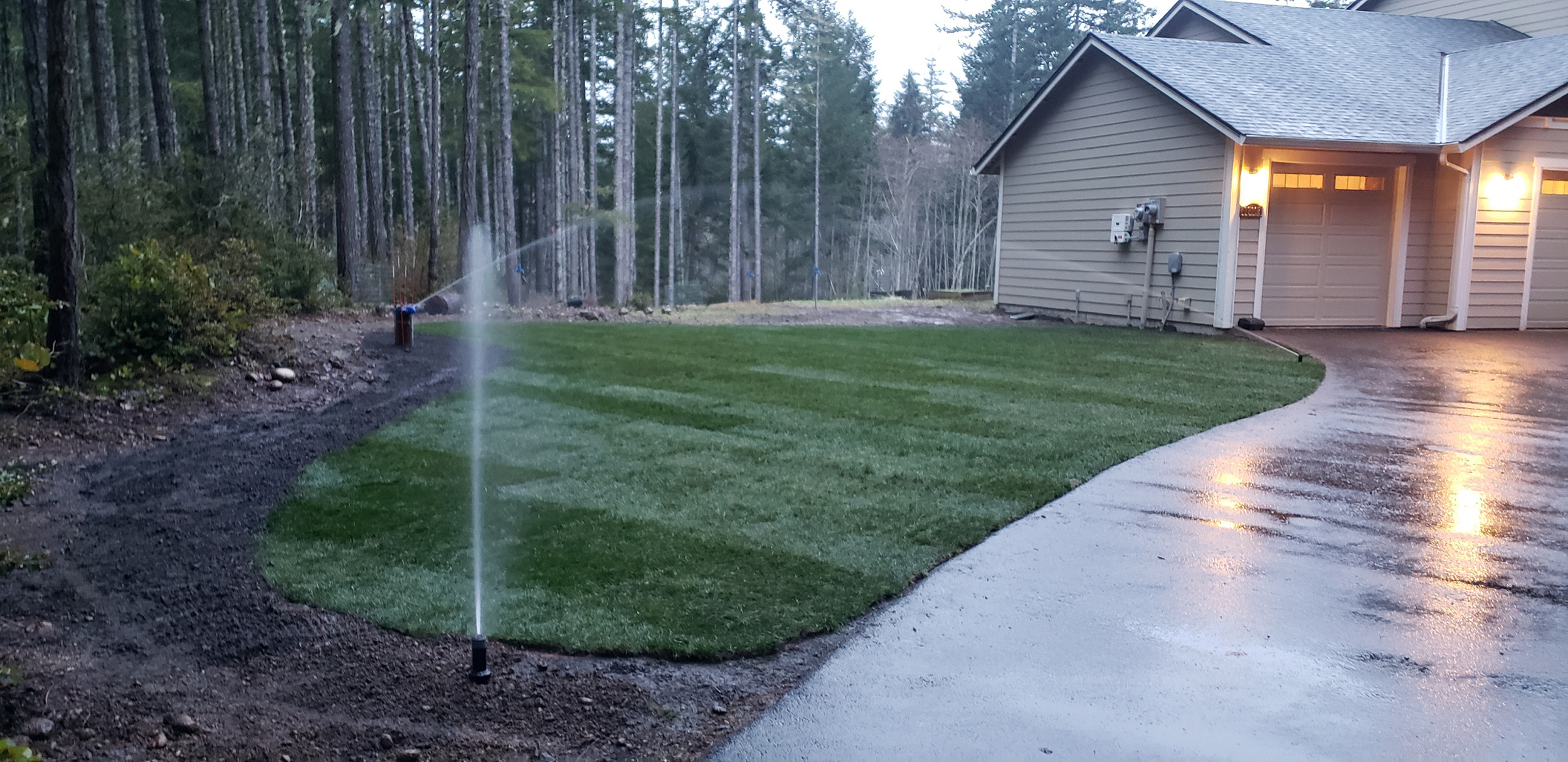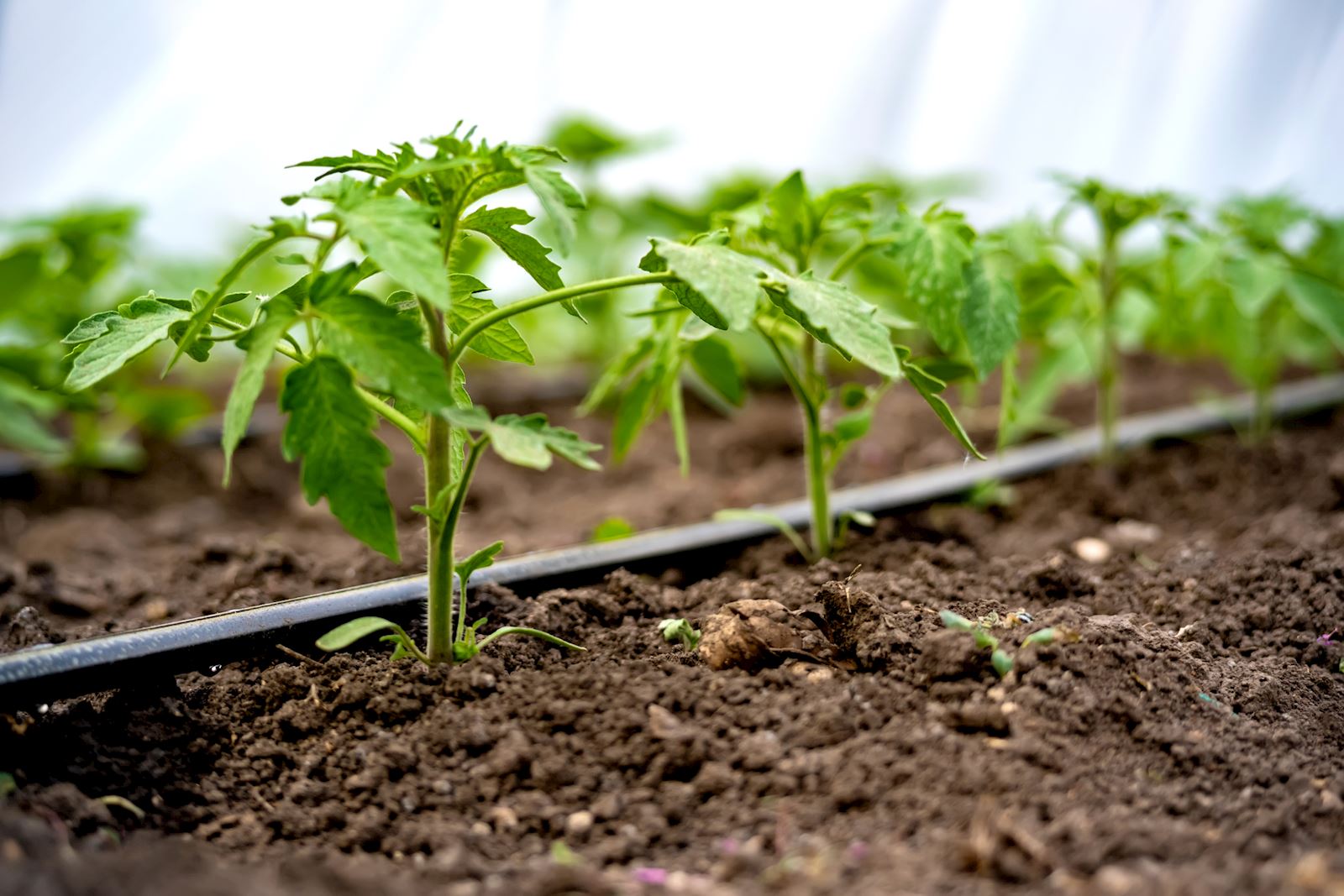Home>Gardening News and Trends>Latest News>What Is An Irrigation System?
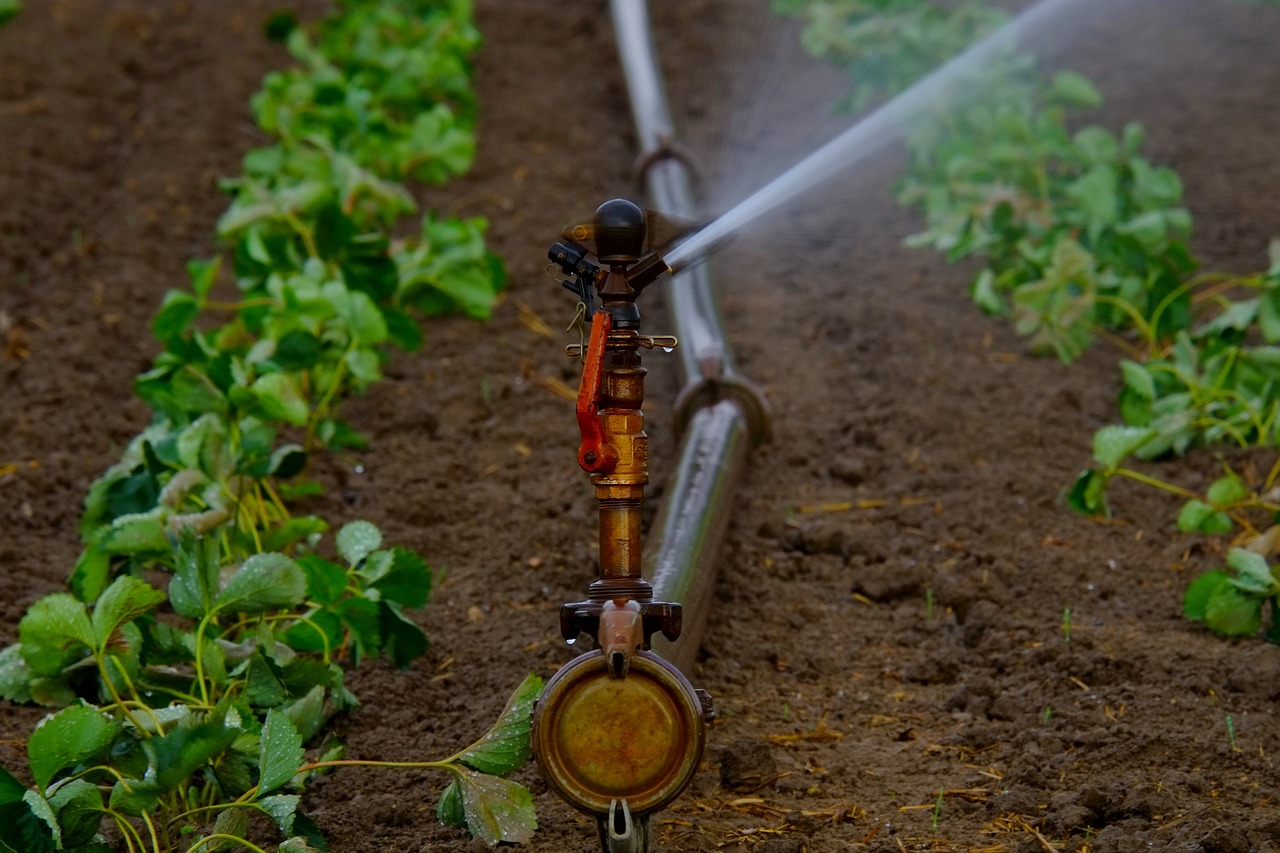

Latest News
What Is An Irrigation System?
Modified: January 22, 2024
Discover the Latest News on Irrigation Systems, including their functionality, benefits, and advancements in water-saving technology. Stay informed and make the most of your irrigation system with our comprehensive coverage.
(Many of the links in this article redirect to a specific reviewed product. Your purchase of these products through affiliate links helps to generate commission for Chicagolandgardening.com, at no extra cost. Learn more)
Table of Contents
- Introduction
- Definition of an Irrigation System
- Components of an Irrigation System
- Types of Irrigation Systems
- Drip Irrigation
- Sprinkler Irrigation
- Surface Irrigation
- Subsurface Irrigation
- Benefits of Using an Irrigation System
- Factors to Consider When Designing an Irrigation System
- Maintenance and Troubleshooting of Irrigation Systems
- Conclusion
Introduction
Welcome to the world of irrigation systems, where water is efficiently delivered to plants, crops, and landscapes to ensure their health and vitality. In an era where water scarcity and conservation are priorities, irrigation systems play a crucial role in optimizing water usage and sustaining agricultural practices.
An irrigation system is a method of artificially supplying water to an area of land to support the growth of plants, maintain landscapes, or even for recreational purposes. It provides a systematic and controlled approach to watering, ensuring that the right amount of water is delivered to the plants precisely when they need it.
Traditionally, irrigation was a labor-intensive process involving manual watering with buckets or hoses. However, as technology has advanced, so too have the methods and efficiency of irrigation systems. Now, automated systems are widely used to deliver water accurately and efficiently, improving plant growth and minimizing water waste.
Whether you are a farmer looking to irrigate crops, a homeowner wanting to maintain a lush garden, or a golf course manager responsible for keeping fairways green, understanding how irrigation systems work and their various components is essential.
In this article, we will delve into the world of irrigation systems, exploring the different types and their components. We will also discuss the benefits of using an irrigation system, factors to consider when designing one, and tips for maintenance and troubleshooting. By the end, you’ll have a comprehensive understanding of irrigation systems and how they can enhance your plant and landscape management practices.
Definition of an Irrigation System
An irrigation system can be defined as a network of interconnected components designed to deliver water to plants or crops in a controlled and efficient manner. It is a method of supplying water to agricultural fields, gardens, landscapes, and other areas where vegetation requires additional moisture.
At its core, an irrigation system consists of several key components that work together to distribute water evenly. These components include a water source, a pump or water supply system, pipes or channels for water transportation, valves for regulating water flow, and emitters or sprinklers to distribute water to the desired areas.
The main goal of an irrigation system is to provide plants or crops with the necessary amount of water at the right time. This ensures that they receive the optimal hydration required for growth while minimizing water waste.
Irrigation systems come in various forms, depending on the size of the area to be irrigated, the type of plants or crops, and other specific requirements. Some systems are manual, where water is manually directed to the intended areas, while others are automated and can be programmed to water at specific times and intervals.
With the advancement of technology, modern irrigation systems often incorporate sensors and controllers that monitor weather conditions, soil moisture levels, and even specific plant water needs. This data-driven approach allows for precise control and efficient water usage, resulting in healthier plant growth and reduced water consumption.
Overall, the use of an irrigation system offers numerous benefits, including improved crop productivity, reduced labor and water costs, and environmental conservation through efficient water management. By providing plants with the right amount of water, an irrigation system helps to ensure their health, longevity, and overall aesthetic appeal in landscapes and gardens.
Components of an Irrigation System
An irrigation system is composed of several essential components that work together to deliver water efficiently and effectively. Understanding these components is crucial for designing, installing, and maintaining an irrigation system. Let’s take a closer look at each of them:
- Water Source: The water source is the origin of the water supply for the irrigation system. It can be a natural source such as a river, lake, or well, or a municipal water supply. The reliability and availability of the water source play a vital role in planning an irrigation system.
- Pump or Water Supply System: In cases where the water source does not provide enough pressure to deliver water to the designated areas, a pump or water supply system is used to increase the water pressure. The pump or water supply system ensures a sufficient flow rate to distribute water effectively.
- Pipes or Channels: Pipes or channels are used to transport water from the water source to the areas where irrigation is needed. These can be made of different materials such as PVC, polyethylene, or concrete, depending on the specific requirements of the irrigation system.
- Valves: Valves are used to control the flow of water within the irrigation system. They can be manual or automated and are strategically placed at various points to regulate water distribution. Valves allow for the adjustment of water flow and enable different zones to be irrigated independently.
- Emitters or Sprinklers: Emitters or sprinklers are the devices responsible for delivering water to the plants or crops. They come in different forms, including drip emitters, spray heads, and rotor sprinklers. These devices are strategically placed to ensure even water distribution across the irrigated area.
- Controller: The controller is the brain of the irrigation system. It is a programmable device that allows for the automation and scheduling of water distribution. Controllers can be set to specific times, durations, and frequencies, ensuring that water is delivered when and where it is needed.
- Sensors: Sensors are optional but highly beneficial components of an irrigation system. They provide real-time data on soil moisture levels, weather conditions, and other environmental factors. This data helps optimize water usage by ensuring that water is only applied when necessary.
By understanding and properly utilizing these components, an irrigation system can be designed and installed to meet specific irrigation needs. Each component plays a vital role in achieving efficient water distribution and maintaining healthy plants or crops.
Types of Irrigation Systems
There are several different types of irrigation systems available, each designed to cater to specific irrigation needs and conditions. The choice of irrigation system depends on factors such as the type of plants or crops, terrain, water availability, and desired level of automation. Let’s explore some commonly used types of irrigation systems:
- Drip Irrigation: Drip irrigation is a method that involves the slow, precise application of water directly to the plant’s root zone. It uses a network of tubes or pipes with emitters to deliver water near the base of the plants. Drip irrigation is highly efficient, minimizing water loss due to evaporation or runoff.
- Sprinkler Irrigation: Sprinkler irrigation involves the use of sprinkler heads that spray water over the plants or crops, simulating rainfall. Sprinkler systems can be fixed or movable, and they cover a larger area with greater flexibility compared to other systems. This type of irrigation is commonly used in larger agricultural fields and landscaped areas.
- Surface Irrigation: Surface irrigation is one of the oldest and simplest methods of irrigation. It involves flooding or applying water directly onto the soil surface, allowing it to infiltrate and move across the field by gravity. Surface irrigation is suitable for level or slightly sloping terrains and is often used in rice paddies and certain vegetable crops.
- Subsurface Irrigation: Subsurface irrigation delivers water directly to the root zone of plants through buried pipes or tubes. The water is delivered below the soil surface, reducing evaporation and minimizing water loss. This type of irrigation is particularly useful in water-scarce areas and for maintaining landscapes where water needs to be concealed.
Each type of irrigation system has its advantages and considerations. Drip irrigation provides precise water application and is ideal for conserving water, while sprinkler irrigation covers larger areas and is suitable for a wide range of crops. Surface and subsurface irrigation are effective for specific soil and crop conditions.
It’s essential to evaluate factors such as water availability, soil type, topography, plant/crop water requirements, and budgetary constraints when selecting an irrigation system. Additionally, a combination of different irrigation methods can be employed within a single system to optimize water distribution and cater to the specific needs of different areas within a landscape or agricultural field.
Drip Irrigation
Drip irrigation is a highly efficient and precise method of delivering water directly to the root zone of plants. It involves the slow and controlled application of water through a network of tubes or pipes with emitters. Drip irrigation is widely used in agriculture, landscaping, and even home gardens due to its numerous advantages.
One of the main benefits of drip irrigation is its water efficiency. Compared to other irrigation methods, such as sprinkler systems, drip irrigation significantly reduces water loss due to evaporation and runoff. By delivering water directly to the plant’s root zone, drip irrigation ensures that water is used efficiently and without wastage.
Another advantage of drip irrigation is its ability to provide precise water application. The emitters, which are strategically placed near the base of each plant, allow for precise control over the amount of water delivered. This enables growers to tailor the irrigation to meet the specific water requirements of different plants or crops, promoting healthier and more productive growth.
Drip irrigation is also beneficial for reducing weed growth. Since the water is delivered directly to the plants, the weed-prone areas between the rows or in open spaces receive minimal water, inhibiting weed germination and growth. This minimizes the need for manual weeding, saving time and labor.
The use of drip irrigation can also lead to better nutrient management. With traditional irrigation systems, nutrients can be easily leached away from the root zone. However, with drip irrigation, water and fertilizers can be applied simultaneously through the system, allowing for the targeted delivery of nutrients to the plant’s roots. This ensures that plants receive the necessary nutrients for optimal growth and development.
In addition to these benefits, drip irrigation allows for greater control over irrigation scheduling. Drip systems can be easily automated and programmed using controllers, ensuring that water is delivered at the right time and in the right quantities. This not only enhances the overall efficiency of water usage but also provides convenience to the user by reducing manual labor and maintenance.
Overall, drip irrigation is a highly efficient, precise, and environmentally friendly method of irrigation. It conserves water, reduces weed growth, promotes better nutrient management, and offers greater control over irrigation scheduling. Whether in large-scale agricultural fields, commercial landscapes, or small home gardens, drip irrigation is a popular choice for optimizing plant growth and ensuring efficient water usage.
Sprinkler Irrigation
Sprinkler irrigation is a commonly used method of delivering water to plants or crops by simulating rainfall. It involves the use of sprinkler heads that distribute water through a system of pipes, spraying it over the designated area. Sprinkler irrigation offers several advantages and is widely used in agricultural fields, landscaped areas, and even residential gardens.
One of the primary benefits of sprinkler irrigation is its ability to cover a larger area. Sprinkler systems can be designed to distribute water over a wide radius, making them suitable for irrigating large agricultural fields or expansive landscaped areas. The flexibility and coverage of sprinkler systems make them a popular choice for many growers.
Another advantage of sprinkler irrigation is its versatility. Different types of sprinkler heads can be used, allowing for adjustments in water distribution patterns and application rates. This adaptability makes sprinkler systems suitable for various types of crops, including both row crops and taller vegetation.
Sprinkler irrigation also provides better control over irrigation scheduling. Irrigation can be automated through timers or controllers, allowing for precise control over when and how long the system operates. This ensures that water is delivered at optimum times, avoiding over-watering or under-watering, and promoting healthy plant growth.
In addition to its coverage and control, sprinkler irrigation is effective in cooling plants and reducing heat stress. The spray of water creates a cooling effect, especially during hot summer days. This can be particularly beneficial for certain crops that are more susceptible to heat stress, helping to maintain their productivity and vitality.
However, it’s important to note that sprinkler irrigation may not be the most water-efficient method compared to others, such as drip irrigation. Since water is sprayed overhead, there is a higher potential for water loss due to evaporation or wind drift. Therefore, proper design and maintenance of the system are crucial to ensure efficient water usage.
Furthermore, the use of sprinkler irrigation may not be ideal in areas with high wind or uneven terrain. Wind can impact the uniformity of water distribution, while uneven terrain may result in water pooling in some areas and insufficient coverage in others. If these challenges are present, additional measures such as using windbreaks or dividing the field into irrigation zones may be necessary.
In summary, sprinkler irrigation offers wide coverage, flexibility, and efficient scheduling capabilities. It is a versatile option suitable for a variety of crops and landscapes. While it may not be the most water-efficient method, proper design and maintenance can help optimize its effectiveness and ensure the healthy growth of plants or crops.
Surface Irrigation
Surface irrigation is one of the oldest and simplest methods of irrigating fields and crops. It involves the direct application of water onto the soil surface, allowing it to infiltrate and move across the field by gravity. This method is commonly used in areas with level or slightly sloping terrains and is particularly well-suited for certain types of crops.
One of the key advantages of surface irrigation is its simplicity and low-cost implementation. It requires minimal infrastructure, with no need for complex pipes or emitters. Water is delivered to the field through open channels, and the natural slope of the land allows it to flow across the field, infiltrating the soil as it goes.
Surface irrigation is suitable for a range of crop types, including rice, wheat, and certain vegetable crops. These crops can tolerate more variability in soil moisture levels, and the method is well-suited to their growth requirements.
Another benefit of surface irrigation is its ability to promote soil fertility. As water moves across the field, it carries nutrients along with it, distributing them evenly throughout the soil. This helps to replenish soil nutrients and improve the overall fertility, providing a favorable environment for crop growth.
However, it is important to note that surface irrigation can be less efficient compared to other methods. Water loss through evaporation and runoff can occur, especially on sloping terrains. A well-designed surface irrigation system takes into account factors such as soil characteristics, slope, and field layout to minimize these losses.
Managing water efficiently in surface irrigation is crucial to maximize water efficiency and crop yield. Proper field preparation, such as creating level beds or incorporating furrows, can help control water flow and minimize runoff. Implementing techniques such as “check basins” or “border irrigation” can further improve water distribution and reduce losses.
Moreover, the timing and duration of irrigation events are critical in surface irrigation. Careful monitoring of soil moisture levels and weather conditions is necessary to determine when to initiate irrigation and ensure that the water is applied at the right time. This allows for efficient water usage and avoids over-watering or under-watering.
In summary, surface irrigation is a cost-effective and practical method for irrigating certain crops on level or slightly sloping terrains. While it may not be the most efficient irrigation method, proper management and techniques can optimize water distribution and minimize water loss through evaporation and runoff. It remains a valuable option in areas where it is suitable and properly implemented.
Subsurface Irrigation
Subsurface irrigation, also known as subsurface drip irrigation (SDI), is a method of delivering water directly to the plant’s root zone through buried pipes or tubes. Unlike surface irrigation, where water is applied to the soil surface, subsurface irrigation delivers water below the soil surface, resulting in efficient water usage and minimized water loss.
One of the primary advantages of subsurface irrigation is its water efficiency. By delivering water directly to the root zone, subsurface irrigation minimizes water loss through evaporation or runoff. This targeted water application ensures that plants receive the required moisture while reducing water waste.
Subsurface irrigation is particularly useful in areas with limited water availability or water restrictions. Since the water is applied below the surface, it remains hidden and is less susceptible to evaporation or wind drift. This allows for the conservation of water resources and promotes sustainable irrigation practices.
Another benefit of subsurface irrigation is its ability to prevent weed growth. By delivering water directly to the root zone and minimizing water exposure to the soil surface, subsurface irrigation provides unfavorable conditions for weed germination and growth. This reduces the need for manual weeding or reliance on herbicides, ultimately saving time and labor.
Subsurface irrigation also offers flexibility in scheduling and irrigation management. It can be easily automated and controlled using timers or controllers, allowing for precise control over water application. This permits farmers and landscapers to tailor the irrigation to their specific plant and crop needs, promoting healthier growth and increased yields.
However, subsurface irrigation requires careful planning and design to ensure its effectiveness. Proper soil preparation, including soil compaction and removal of potential obstructions, is critical to ensure the even and efficient distribution of water throughout the root zone. Regular maintenance, such as monitoring, inspecting, and repairing the system, is also essential for its long-term functionality.
It’s important to note that subsurface irrigation is not suitable for all crops and soil conditions. It works best in well-draining soils that can easily accommodate water movement through the subsurface pipes or tubes. In clay or poorly draining soils, careful consideration should be given to the design and installation to prevent waterlogging and root suffocation.
In summary, subsurface irrigation offers significant advantages in water efficiency, weed prevention, and flexibility in irrigation management. It is particularly valuable in areas with limited water resources or restrictions. Proper planning, design, and maintenance are crucial to ensure the effectiveness and longevity of the system, providing a sustainable solution for efficient plant irrigation.
Benefits of Using an Irrigation System
Using an irrigation system offers numerous benefits for farmers, gardeners, and landscapers alike. Whether you’re managing a large agricultural field or maintaining a small backyard garden, implementing an irrigation system can greatly enhance plant health, conserve water, and improve overall efficiency. Let’s explore some of the key benefits of using an irrigation system:
- Water Conservation: One of the most significant advantages of using an irrigation system is its ability to conserve water. With traditional watering methods, such as manual watering or sprinklers, a considerable amount of water can be wasted through evaporation and runoff. An irrigation system, on the other hand, ensures that water is delivered efficiently and directly to the root zone of plants, minimizing water wastage and promoting the conservation of this precious resource.
- Improved Plant Health: An irrigation system enables precise and consistent watering, ensuring that plants receive the appropriate amount of water they need to thrive. Over or under-watering can lead to plant stress, root rot, or stunted growth. With an irrigation system, water can be delivered at the right frequency and in the right quantities, promoting healthier root development, optimal nutrient absorption, and overall improved plant health.
- Time and Labor Savings: Watering plants manually can be time-consuming, especially when dealing with larger areas or multiple beds. An irrigation system allows for automated watering, eliminating the need for manual labor and saving valuable time. With programmable controllers and timers, you can set the irrigation schedule according to your specific requirements, ensuring that plants are watered consistently and without the need for constant supervision.
- Flexibility and Precision: Different plants or crops have varying water requirements. An irrigation system offers the flexibility to adjust water application based on the specific needs of different areas or plants within your landscape. By using tools such as drip emitters, sprinkler heads, or adjustable valves, you can customize the irrigation system to deliver precise amounts of water to each plant, ensuring optimal growth and maximizing resource efficiency.
- Yield and Productivity Enhancement: For farmers and agricultural professionals, irrigation systems play a vital role in boosting crop yields and overall productivity. A consistent water supply throughout the growing season ensures that crops receive the necessary moisture for healthy growth and development. With proper irrigation management, farmers can optimize their production, maximize their yields, and ultimately increase profitability.
- Enhanced Landscapes and Aesthetics: In landscaping and gardening, an irrigation system helps maintain lush and vibrant landscapes. By providing consistent water to lawns, flowers, and ornamental plants, an irrigation system ensures their vitality and aesthetics, enhancing the appeal of your outdoor spaces. A well-designed irrigation system can also improve the long-term value of your property by preserving the health and beauty of your landscapes.
Whether it’s conserving water, improving plant health, saving time, enhancing productivity, or beautifying your surroundings, the benefits of using an irrigation system are far-reaching. With careful planning, installation, and maintenance, an irrigation system can be a valuable investment that optimizes resource usage and promotes flourishing plant growth.
Factors to Consider When Designing an Irrigation System
Designing an irrigation system involves a careful assessment of various factors to ensure optimal water distribution and efficient usage. Whether you’re designing an irrigation system for a small garden or a large agricultural field, considering these key factors is essential:
- Water Source and Supply: The availability and reliability of the water source are crucial considerations. Determine whether the water will come from a well, a municipal supply, or a natural source like a river or lake. Assess the water quality, flow rate, and pressure, as these factors will impact the system design and water distribution efficiency.
- Plant Water Needs: Understanding the specific water requirements of your plants or crops is essential for designing an effective irrigation system. Different plants have varying water needs at different growth stages. Consider factors such as plant type, root depth, canopy size, and evapotranspiration rates to determine the appropriate watering schedule, emitter type, and watering duration for each plant or crop.
- Soil Type and Drainage: Soil plays a crucial role in irrigation system design. Assess the soil type, texture, and drainage characteristics to determine the appropriate irrigation method. Sandy soils may require more frequent watering compared to clay soils, which hold water for longer periods. Consider soil compaction, porosity, and organic matter content to ensure efficient water infiltration and minimize water loss.
- Terrain and Topography: The terrain and topography of the area to be irrigated should be carefully evaluated. Sloping landscapes may require special techniques to prevent water runoff or erosion. Consider the land contours and potential obstructions that may affect water flow and distribution, and plan the system accordingly. Terracing, contouring, or dividing the field into zones may be necessary to ensure uniform water application.
- System Components and Layout: Select the appropriate irrigation components based on the specific needs of your irrigation system. Consider factors such as water pressure, emitter type, pipe material, and valve size. Determine the layout of the system, including the pipe network, valve placement, and sprinkler or emitter positioning. Optimize the layout to minimize pressure loss, ensure even water distribution, and maximize the coverage area.
- Irrigation Efficiency and Water Conservation: Design your irrigation system to promote water conservation and optimize efficiency. Incorporate techniques such as flow control valves, pressure regulation devices, and moisture sensors to ensure precise water application and avoid water waste. Consider scheduling features, such as timers or controllers, to automate the irrigation process and avoid over or under-watering.
- Maintenance and Accessibility: Plan for easy access and maintenance of the irrigation system. Consider factors such as valve locations, filter systems, and backflow prevention devices. Ensure that the system can be easily monitored, inspected, and maintained to prevent malfunctions or clogs that could impact water flow and system performance.
Designing an irrigation system requires careful consideration of these factors to ensure effective water distribution, promote plant health, and maximize resource efficiency. Consulting with irrigation professionals or experts can be helpful in designing a system tailored to your specific needs and ensuring the long-term success of your irrigation practices.
Maintenance and Troubleshooting of Irrigation Systems
Maintaining and troubleshooting an irrigation system is crucial for its optimal performance and longevity. Regular maintenance helps prevent malfunctions, ensures efficient water usage, and extends the lifespan of the system. Here are some key aspects to consider when maintaining and troubleshooting your irrigation system:
- Inspect and Clean Components: Regularly inspect all components of your irrigation system, such as pipes, emitters, sprinkler heads, valves, and filters. Clear any debris, dirt, or obstructions that may impede water flow and cause clogs. Clean or replace clogged sprinkler nozzles or emitters to ensure proper water distribution and prevent uneven watering.
- Check for Leaks: Check for any leaks in the irrigation system, including pipes, fittings, and connection points. Leaks not only waste water but can also lead to decreased system pressure and poor performance. Repair or replace any damaged or leaking components promptly to maintain optimal water distribution.
- Monitor and Adjust Watering Schedule: Regularly monitor the watering schedule and adjust it based on weather conditions, seasonal changes, and plant needs. Avoid over-watering or under-watering, as both can negatively impact plant health and system efficiency. Consider using moisture sensors or smart controllers to automate the watering schedule based on real-time soil moisture levels.
- Check Pressure and Flow Rates: Periodically check the water pressure and flow rates within your irrigation system. Incorrect water pressure can lead to inefficient water distribution or damage to system components. Ensure that pressure regulators and pressure relief valves are working correctly to maintain optimal pressure levels throughout the system.
- Inspect Backflow Prevention Devices: Backflow prevention devices are essential to prevent contamination of the water supply. Regularly inspect and test these devices to ensure they are functioning properly. Follow local regulations and guidelines for testing and certification requirements to maintain a safe and compliant irrigation system.
- Winterization: Properly winterize your irrigation system to prevent freezing and damage during colder months. Drain all water from the pipes, valves, and components to avoid cracking or bursting due to ice formation. Disconnect and store any above-ground components, such as sprinkler heads or hoses, in a suitable location.
- Keep Records and Document Changes: Maintain records of all maintenance activities, repairs, and changes made to the irrigation system. This documentation will help track the system’s performance, identify recurring issues, and provide valuable information for future troubleshooting and improvements.
- Seek Professional Help when Needed: If you encounter complex issues or are uncertain about troubleshooting procedures, it’s best to seek help from irrigation professionals. They can provide expertise, diagnose system problems, and offer effective solutions to ensure the proper functioning of your irrigation system.
Regular maintenance and troubleshooting of your irrigation system are essential to ensure its efficient operation and longevity. By following these maintenance practices and promptly addressing issues, you can optimize water distribution, promote healthy plant growth, and maximize the benefits of your irrigation system.
Conclusion
Irrigation systems play a crucial role in efficiently and effectively delivering water to plants, crops, and landscapes. They offer numerous benefits, including water conservation, improved plant health, time savings, flexibility in watering schedules, increased productivity, and enhanced landscape aesthetics.
When designing an irrigation system, it’s important to consider factors such as the water source and supply, plant water needs, soil type and drainage, terrain and topography, system components and layout, and irrigation efficiency. Taking these factors into account ensures optimal water distribution and resource efficiency.
Maintaining and troubleshooting an irrigation system is just as important as its initial design and installation. Regular inspections, cleaning of components, checking for leaks, monitoring watering schedules, and proper winterization all contribute to the efficient operation and longevity of the system.
Whether you choose drip irrigation, sprinkler irrigation, surface irrigation, or subsurface irrigation, each type has its unique advantages and considerations. Drip irrigation offers precise water application and is highly water-efficient, while sprinkler irrigation provides wide coverage and flexibility. Surface irrigation is suitable for level or slightly sloping terrains, and subsurface irrigation minimizes water loss and allows for targeted water delivery.
By understanding and utilizing irrigation systems effectively, we can optimize water usage, promote sustainable agriculture, and maintain beautiful landscapes. Whether you are a farmer, gardener, or landscape professional, implementing an irrigation system can enhance the health and vitality of your plants, conserve water resources, and increase overall efficiency.
So, take the time to design, install, and maintain an irrigation system that suits your specific needs. With careful consideration of the factors involved and regular upkeep, your irrigation system will serve as a reliable and efficient tool for achieving healthy and thriving plants, increased productivity, and a greener future.

